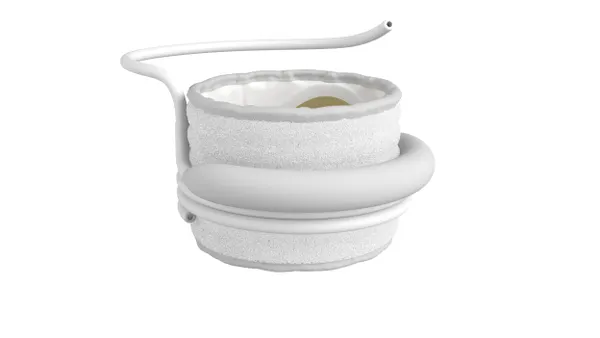Dive Brief:
- Booming patient adoption of Dexcom's G6 continuous glucose monitor in the second quarter offset slipping revenues per user as the company's long-term sales strategy takes it into the pharmacy benefit channel's pricing pressures, as well as the Medicare population and international markets.
- The quarterly check-in with investors mirrored several of the themes seen by primary competitor Abbott, including plans to ramp up manufacturing capacity and adapt CGM technology for therapeutic functions beyond monitoring Type 1 diabetes.
- Dexcom posted another beat-and-raise quarter with 39% revenue growth, exceeding analysts' targets by about $30 million. While the company is still focusing on expanding adoption of G6 in international markets, it's also preparing to finalize its G7 design with Google's Verily, slated for a limited launch in late-2020 with intent for it to become Dexcom's flagship product by the end of 2021.
Dive Insight:
Executives attributed the high-growth quarter to record levels of CGM awareness, which reportedly attracted new users across all channels. And the diabetes tech company doesn't just want its technology to reach Type 1 patients.
"It is very clear to us that CGM as a diagnostic tool will become another large market for us in the future," CEO Kevin Sayer told investors on the second quarter earnings call Wednesday. "Discussions around CGM at ADA were not limited to traditional intensive insulin using populations."
Sayer said that while Dexcom has historically put coverage for Type 2 patients on the back burner as it sought to gain users in the Type 1 population, the company is now taking a dual approach. "We are pushing aggressively to get the Type 2 insulin users covered," he said.
Steven Pacelli, EVP of strategy and corporate development, said that in negotiations with commercial payers, greater access for patients intensively managing Type 2 diabetes is "at the top of the list."
Executives said Dexcom currently has better than 50% coverage in the pharmacy channel and is aiming to be in the 80% range a year from now. The G6 was recently added to Walgreens' Find Care digital platform.
"Although this has not been the primary driver of our volume growth in the first half of the year, we are confident that it is the most efficient channel for patients, clinicians and for Dexcom over the long-term," Pacelli said in prepared remarks.
Lowering costs and prices to consumers will be key for Dexcom to compete with Abbott's FreeStyle Libre CGM, Jefferies analysts suggested.
"Cost reduction is of paramount importance because whether as a direct result of competition or adoption into more cost-conscious markets, there is only one direction that the CGM price is headed over the long term: down," the analysts wrote in a July 31 note to investors.
U.S. CGM adoption currently sits at about 25% to 30% of all Type 1 individuals, with rates negligible among Type 2 patients and hospital and gestational markets, the analysts also noted following the call.
U.S. revenues account for nearly 80% of Dexcom's business and grew 40% during the quarter. International revenue growth of 33% was hampered by lower market penetration in Europe and by "choppy" order patterns characteristic of third-party distribution, executives said.
A number of growth catalysts are set to come into play in the next several quarters, including introduction of G6 in Canada and potentially Japan, as well as the approval and launch of Dexcom-compatible insulin delivery systems from Tandem and Insulet that could convert new CGM users.
CFO Quentin Blackford noted a 29% year-over-year increase in operating expenses came in part from a $3.2 million milestone payment to G7 partner Verily for accelerating development work on the device, as well as costs associated with ramping up operations in its Manila customer service hub.
The beat-and-raise trend Dexcom has had for many quarters is setting it up for increasingly challenging comparisons in the back half of the year, executives said.
While the extent of Dexcom's beats and raises may not be sustainable, William Blair analysts wrote in a July 31 note to investors the company has done a good job keeping its momentum from 2018. "The long-term potential market remains large and what we believe will be the biggest determinant of the stock over the next several years."
Dexcom's closest competitor, Abbott, is still waiting for FDA to authorize its next-generation version of FreeStyle Libre, which the company submitted as an integrated CGM (iCGM). G6 remains the only iCGM currently on the market.
Dexcom raised full-year revenue guidance by about $75 million to the range of $1.325 billion to $1.375 billion. Jefferies analysts predict Dexcom will have gained approximately 75,000 new patients by the end of 2019.












